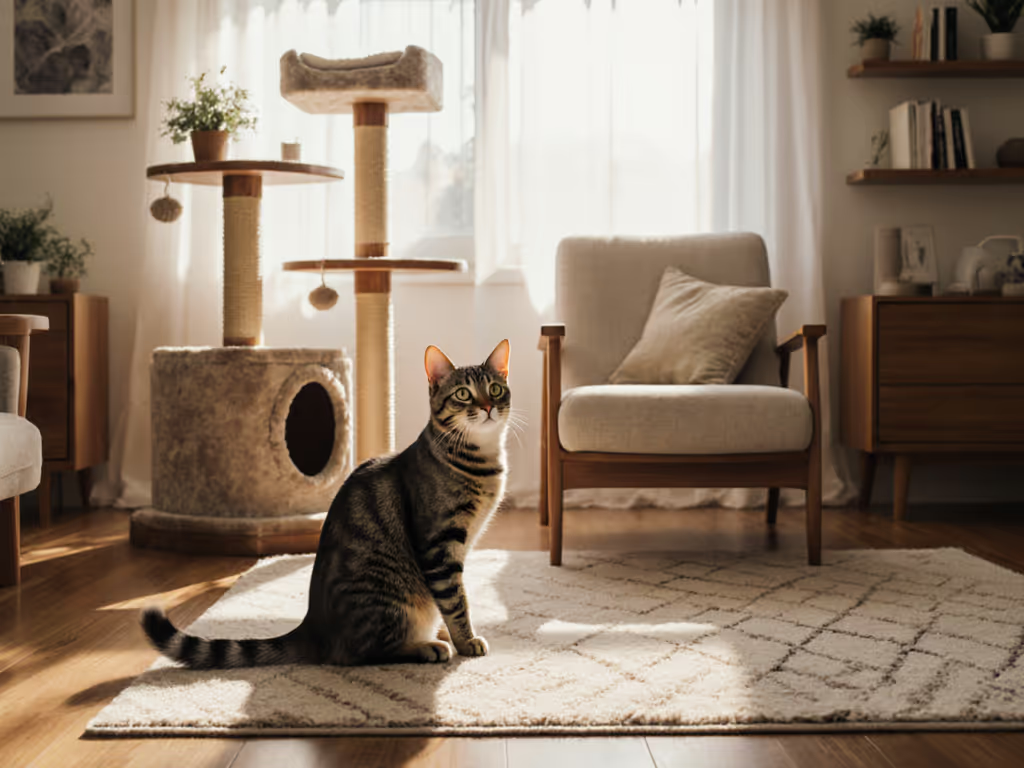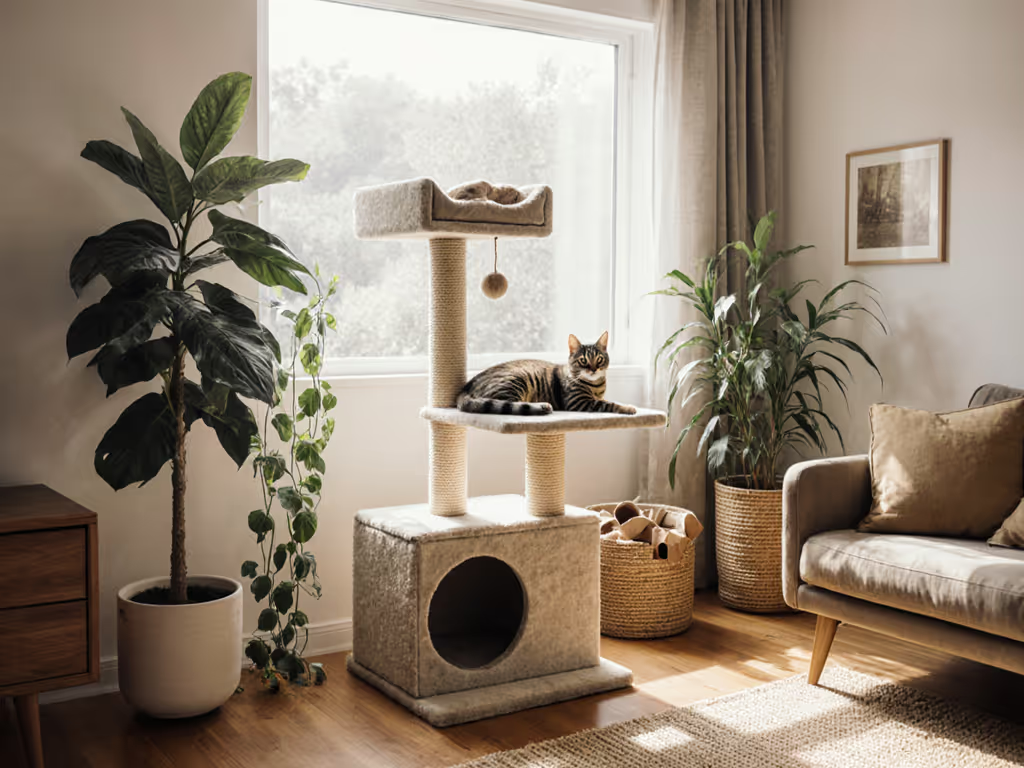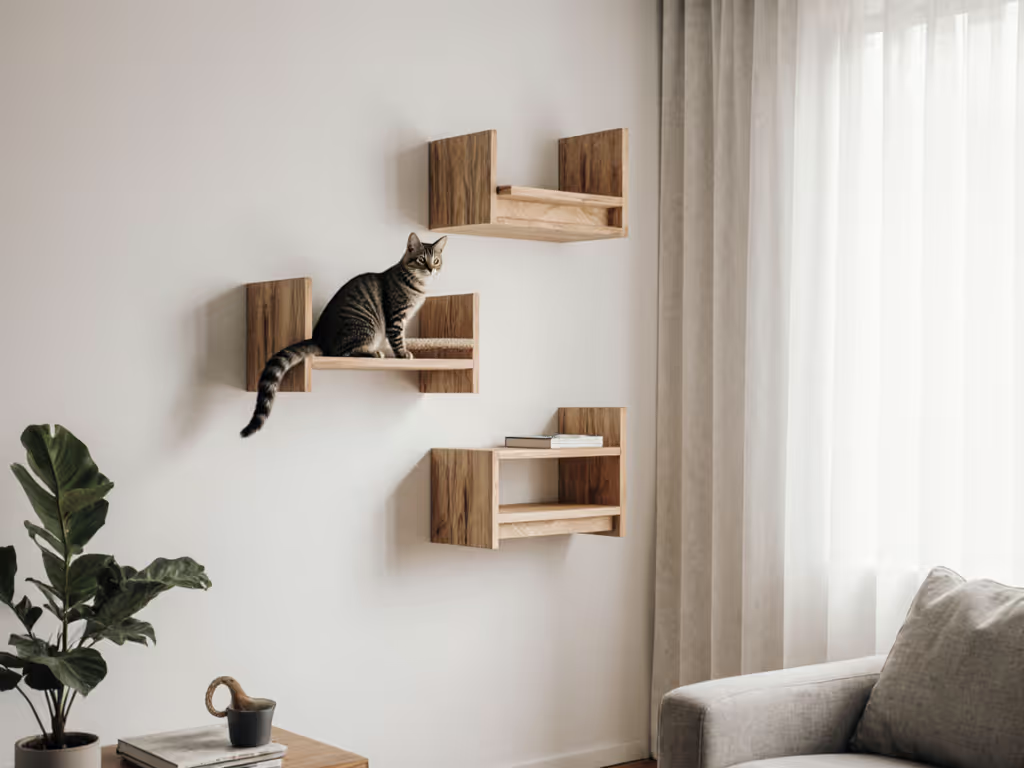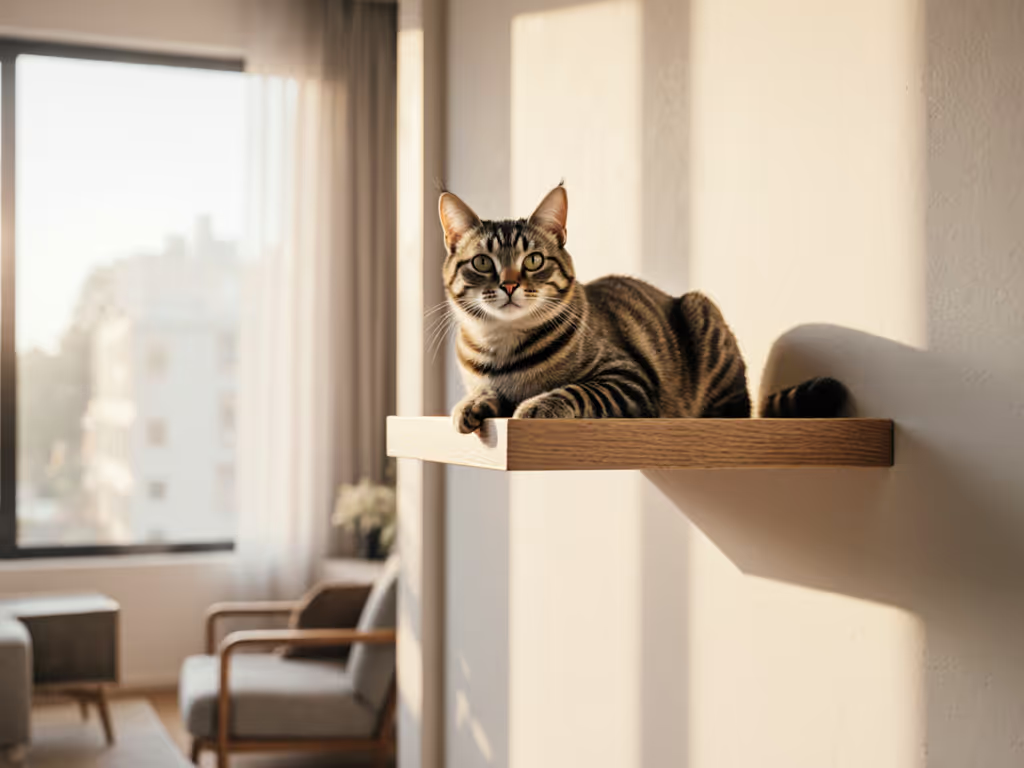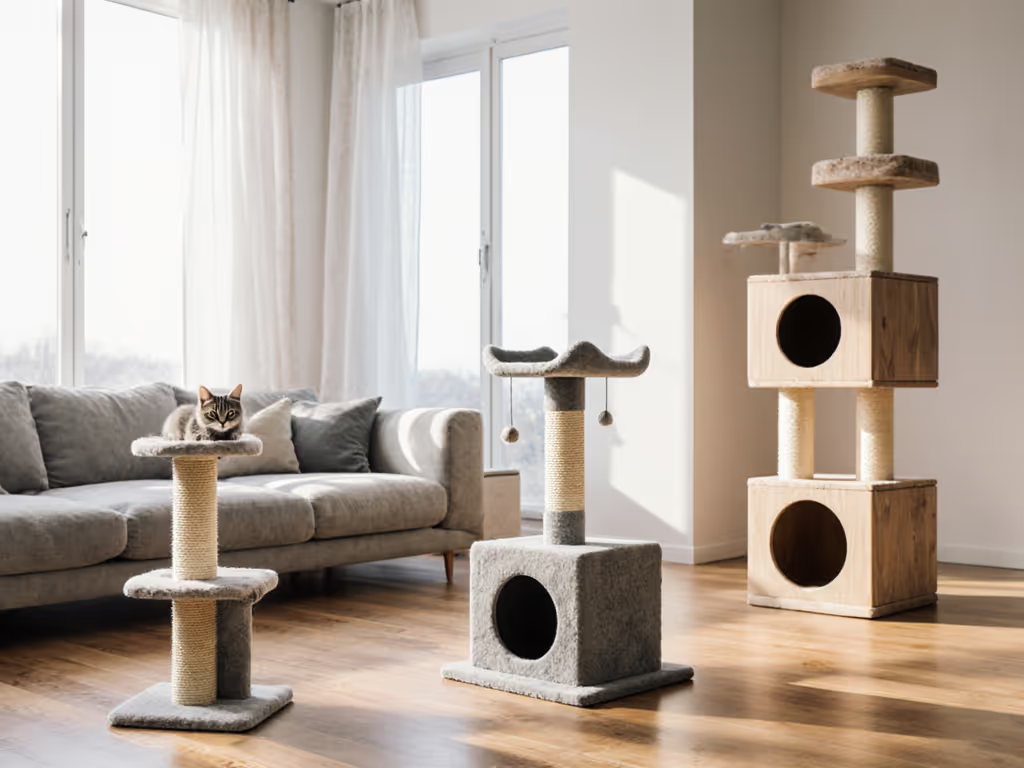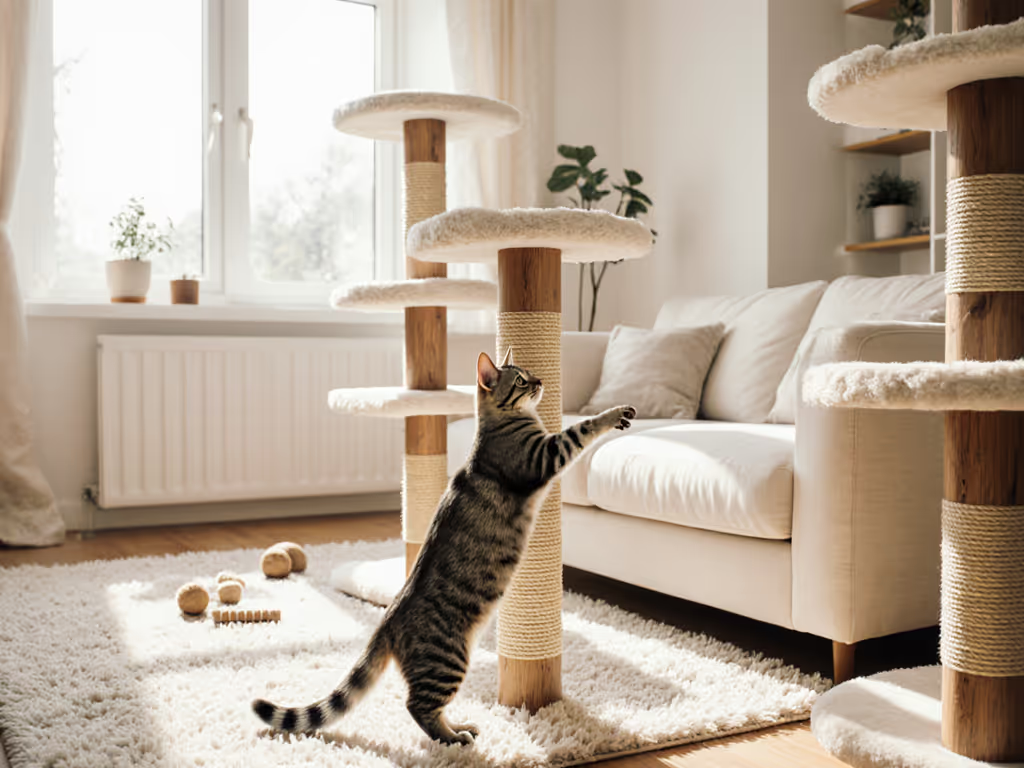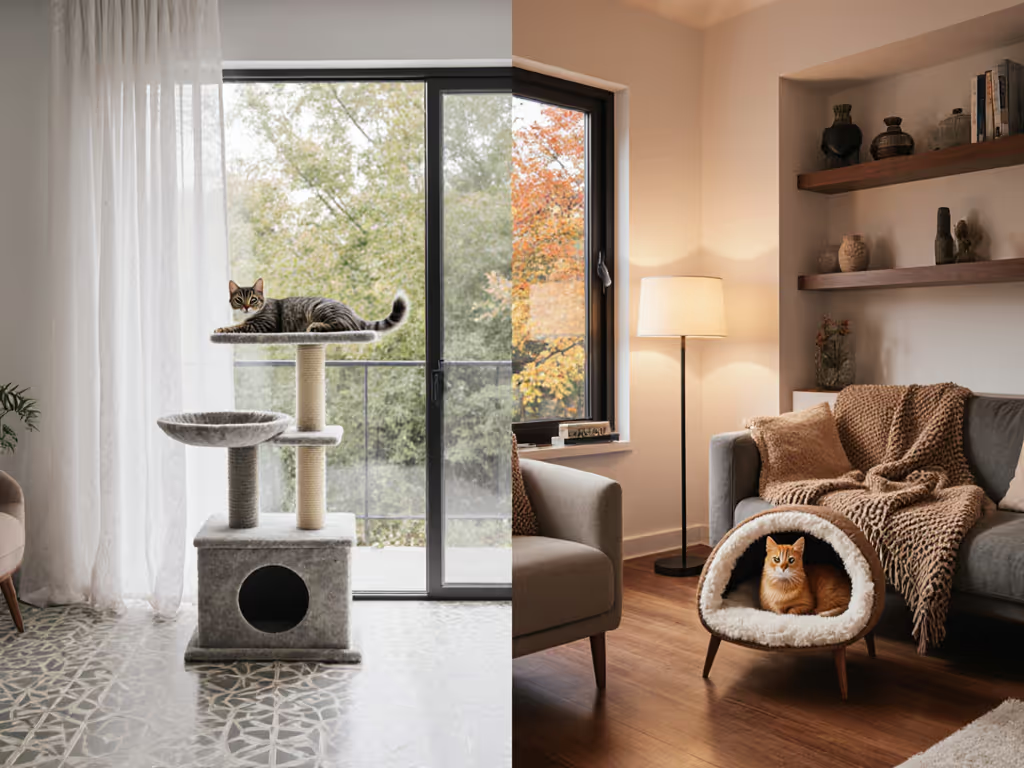As someone who's built cat furniture for over a decade, I've seen too many beautiful homes disrupted by eyesore cat trees that scream "pet zone." Your cat furniture plan shouldn't force compromise between aesthetics and feline wellness. True success in choosing cat furniture balances behavior science with sustainable design (where what's good for your cat is equally good for your space). Think less "cat corner," more integrated habitat that honors both your decor sensibilities and your cat's innate needs. This isn't about deprivation or expensive gimmicks; it's about strategic space planning that pays dividends in cat contentment and home harmony.
Step 1: Audit Your Space Through Your Cat's Eyes
Rather than starting with products, begin by observing where your cat already chooses to rest, climb, and play. Track their movement patterns for 3-5 days with notes:
- Where do they sleep most (sunbeams, bookshelves, under furniture)?
- What surfaces do they prefer for scratching (vertical furniture legs or horizontal carpets)?
- Where do they perch to monitor their domain?
Research shows cats prefer vertical space at 1.5x their body height and horizontal scratching surfaces at 90-degree angles from resting spots. This isn't just preference, it is grounded in feline behavior science. If Fluffy's favorite "perch" is your bookshelf, that's data telling you they're seeking elevation for security.
For space-constrained homes (apartments under 1,000 sq. ft.), prioritize multi-functional cat space planning:
- Install wall-mounted shelves instead of floor-hogging cat trees
- Use window sills with cushioned perches (adding removable fleece pads for easy cleaning)
- Transform unused closet corners with modular cubbies
Remember: Your cat's "territory" includes vertical space. In one study, cats in multi-level homes used vertical space 47% more than horizontal floor space. By designing upward rather than outward, you preserve floor space while respecting natural feline instincts.
Step 2: Define Your Sustainability Parameters
Sustainable cat furniture starts with honest math. Too many "eco-friendly" options crumble after six months, creating more waste than they save. Instead, evaluate based on these metrics:
| Sustainability Factor | Low Quality Score | High Quality Score |
|---|
| Material Lifespan | <1 year | 5+ years with maintenance |
| Repairability | Non-repairable | Replaceable parts (sisal, cushions) |
| End-of-Life | Landfill-bound | Recyclable/biodegradable components |
| Carbon Footprint | Overseas manufacturing | Local/regional sourcing |
My first apartment taught me this the hard way. I couldn't afford designer cat trees, so I salvaged maple from a neighbor's renovation, wrapped thrifted sisal, and finished with water-based varnish. Three years later, the modular steps regrouped to fit a new place, proving that well-considered materials outlast trends. Buy once, cry never isn't just a catchy phrase, it's lifecycle mathematics. When you calculate material costs against replacement frequency, sustainable options often cost 30 to 50 percent less over 5 years.
Want a deeper dive on materials and finishes? See our eco-friendly cat furniture materials comparison for detailed pros and cons.
Spend with intention; let materials and modularity do the work.
Effective feline enrichment requires pieces that evolve with your cat's age and mobility needs. Kittens need stimulating multi-level structures, while seniors benefit from low-entry condos with orthopedic padding. Choose pieces where you can swap components as needs change rather than replacing entire units.
Step 3: Build Your Modular System
Modularity solves the biggest pain point in cat furniture essentials: rigid designs that become obsolete as your space or your cat's needs evolve. A pragmatic approach uses these foundational elements:
- Anchor pieces (1 to 2 max): Permanent floor units like a sturdy scratching post or low-entry condo
- Modular components: Wall shelves, removable perches, and stackable cubes
- Behavior-specific add-ons: Replaceable sisal rolls, dangling toy attachments
When I helped a client in a 700 sq. ft. Brooklyn apartment, we anchored with a reclaimed wood scratching post (reused from fallen city trees), then added floating shelves at varying heights using aircraft cable (no visible hardware, maximum visual lightness). When they moved to a townhouse, they simply reconfigured the same components into a vertical tower.
For cat behavior furniture that stands the test of time:
- Use hardware that allows disassembly (bolts instead of glue)
- Choose uniform connection points for adaptability
- Select materials that age gracefully (unfinished wood develops patina rather than peeling)
This approach directly addresses the frustration of "ugly, bulky furniture" by creating custom solutions that complement your aesthetic rather than fighting it. Apartment dwellers I've worked with report 80% less "cat clutter" perception after switching from monolithic cat trees to integrated modular systems.
Step 4: Implement Your Space Plan
Start small with one behavior zone aligned to your cat's most urgent need. Track progress with these metrics:
- Reduction in unwanted scratching (measure weekly)
- New preferred resting spots (note which new spaces they embrace)
- Human satisfaction rating (1-10 scale of how well it integrates with your space)
Source materials thoughtfully:
- Check local woodworkers' shop scraps for offcuts
- Inquire at carpet stores about remnant samples for scratching surfaces
- Search municipal reuse programs for surplus materials
When space is tight, prioritize vertical over horizontal expansion. Cats feel safer at height, so even one well-placed perch near a window can fulfill multiple needs: observation, sunbathing, and territory monitoring. Install it at cat-eye level when they're standing on their hind legs for maximum comfort.
Final Thoughts: Harmonious Habitation Is Achievable
Sustainable cat furniture isn't about perfection, it is about progress toward systems that honor both your cat's instincts and your living space. When you approach choosing cat furniture as integrated habitat design rather than accessory shopping, you create harmony where cats and humans thrive together. Remember my core truth: sustainability is durability plus joy, not deprivation.
Ready to explore further? Consider these resources for deepening your understanding:
- "The Indoor Cat: Innovation and Inspiration for Creating a Feline-Friendly Home" by Kate Benjamin
- Your local municipality's surplus materials program
- Animal shelter upcycling workshops (many teach cat furniture building skills)
Your next step? Spend 10 minutes observing your cat's natural pathways (they have already designed their ideal habitat). Your job is simply to translate that blueprint into beautiful, lasting reality.
